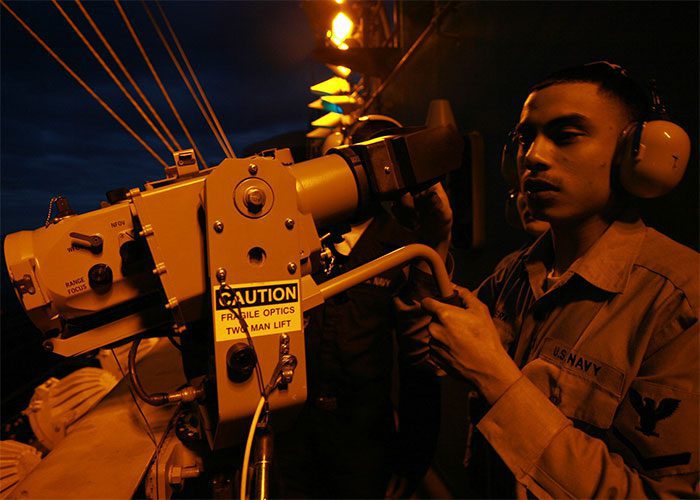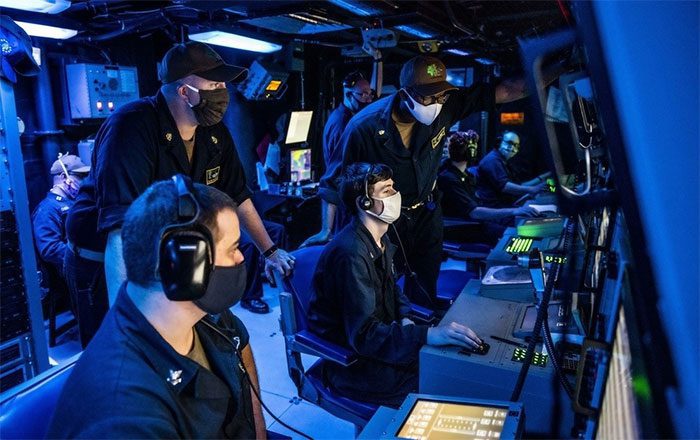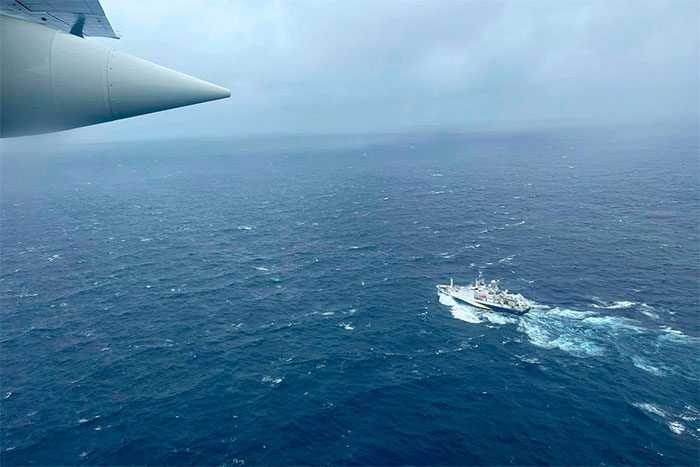A secret network of underwater sensors, originally designed to monitor enemy submarines, detected “an unusual sound resembling an explosion” shortly after the Titan submersible lost contact.
“The U.S. Navy analyzed the audio data and discovered anomalies that coincided with an explosion in the vicinity of where the Titan submersible was recorded before losing contact,” a senior U.S. Navy official told the Wall Street Journal.
This data was logged at the moment the vessel lost contact on June 18. The results of the underwater audio analysis and information regarding the location of the sound were subsequently relayed to the U.S. Coast Guard official in charge of the search operation, Rear Admiral John Mauger.
Officials indicated that while the U.S. Navy could not definitively confirm that the sound came from the Titan, the discovery helped narrow the search area for the vessel before its wreckage was found on June 22.
So, what technology did the U.S. Navy use?
Ocean Floor Surveillance Technology
According to Insider, a military submarine expert stated that this was likely the Integrated Undersea Surveillance System (IUSS), part of a suite of underwater monitoring technologies developed by the U.S. over the past several decades.
Since the early years of the Cold War, when concerns about submarine sabotage arose, the U.S. has continuously monitored the Atlantic and Pacific Oceans through a series of underwater systems scattered across the ocean floor.

The U.S. Navy detected sounds of an explosion when the Titan submersible lost contact. (Image: U.S. Navy).
Insider reported that this system was first established in the early 1950s under the name Sound Surveillance System (SOSUS).
Initially, the installation of SOSUS underwater recording systems on the ocean floor was marketed for oceanographic research. However, the true purpose of these acoustic sensors was to detect the presence of and help the U.S. monitor Soviet submarines.
“The components of the SOSUS system that were developed during the Cold War still exist,” Bryan Clark, a former submarine officer and now a defense expert at the Hudson Institute, told Insider.
In a recent report on underwater military operations, Clark revealed that towards the end of the Cold War, the U.S. Navy enhanced the SOSUS system with assets from the Towed Array Sensor System (SURTASS), creating a more advanced system now referred to as IUSS.

This system was first established in the early 1950s under the name Sound Surveillance System (SOSUS). (Image: DVIDS).
Although the IUSS system has been publicly acknowledged, the exact locations of some sensors and components of this system remain classified information.
However, declassified location information from the 1970s indicates that the sensor components of SOSUS are positioned offshore along the East and West coasts of the U.S., near submarine bases.
A Sad Conclusion to the International Rescue Mission
Clark also suggested that the SOSUS water wave receivers likely captured the final moments of the Titan submersible. Previously, a senior U.S. Navy source disclosed to NPR that SOSUS recorded the explosion when the Titan lost contact.
Brynn Tannehill, a former Navy pilot who flew anti-submarine aircraft and served as a sonar operator on submarines, noted that noises captured from the ocean floor are often ambiguous and always require additional information before drawing conclusions.
“In general, without clear confirmation, what you can say is merely noise consistent with some object X. Until wreckage is found, you cannot rule out the possibility that it could be military activity unknown to the U.S. or simply commercial activities,” Tannehill wrote on social media.
Meanwhile, Chris Drew, a former military journalist and investigative author of the sinking of the USS Thresher in 1963, also pointed out that the sounds can become more ambiguous due to the unusual nature of small submarines.
Both Drew and Tannehill agreed that the U.S. Coast Guard was correct to continue the search efforts, despite the audio data from the Navy. “You cannot stop searching based on a sound,” Drew stated.

U.S. Coast Guard aircraft deployed to search for the Titan submersible. (Image: AP).
On June 22, the U.S. Coast Guard officially confirmed that all five individuals on the Titan submersible had perished in the accident four days earlier. The vessel was believed to have been “crushed” at a depth of nearly 4 kilometers below the ocean surface.
A remotely operated vehicle deployed from a Canadian ship identified several pieces of wreckage on the ocean floor, located approximately 490 meters from the Titanic wreck site and at a depth of 4 kilometers. Authorities subsequently confirmed that these remains belonged to the Titan submersible, according to Reuters.
This marks a tragic conclusion to the large-scale international search and rescue operation for the Titan.
Officials stated that the robot detected five main pieces of wreckage, including the tail section and two parts of the hull. Analysis results indicated that a pressure chamber explosion occurred in the submersible.
Among the passengers on board were British explorer Hamish Harding, French submersible expert Paul-Henri Nargeolet, British-Pakistani billionaire Shahzada Dawood and his son Suleman, along with Stockton Rush, CEO of OceanGate Expeditions.




















































